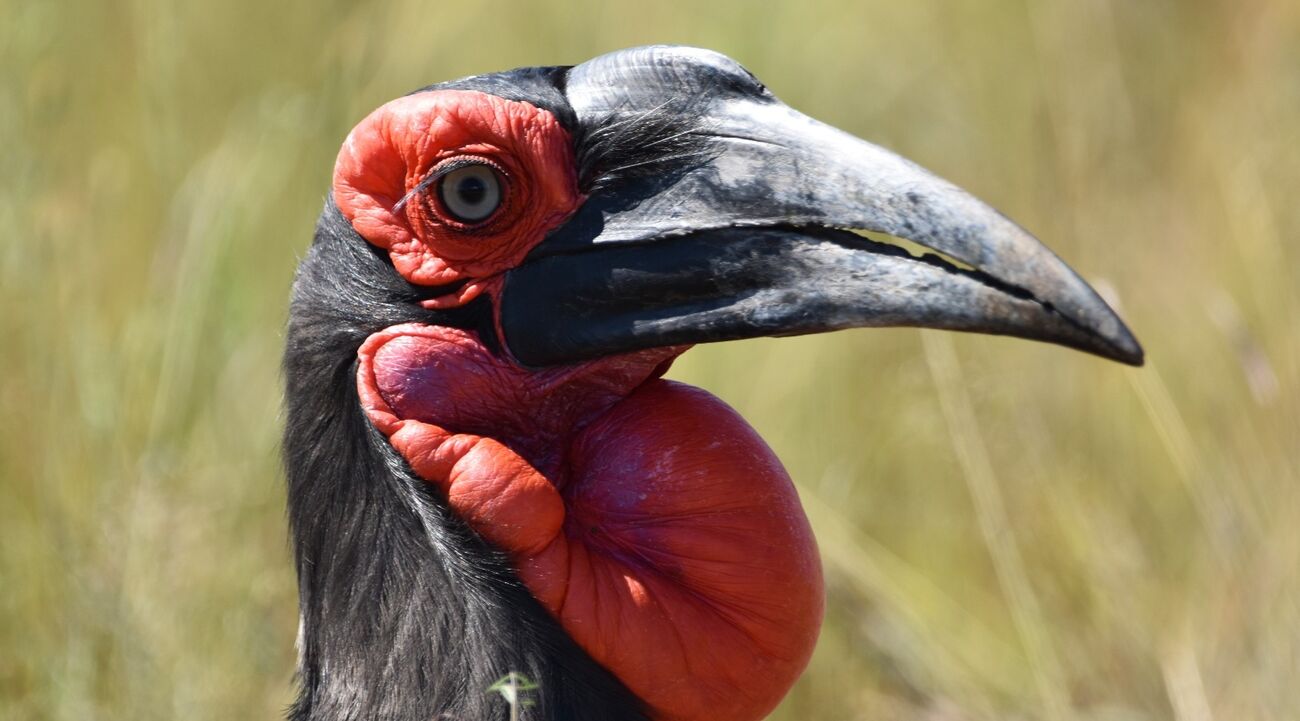
The Southern Ground Hornbill: A Majestic Bird of the African Savanna
Are you ready to discover one of South Africa's most fascinating and unique bird species? Look no further than the Southern Ground Hornbill, also known as the Thunder-bird. With its striking appearance and impressive size, this bird is sure to capture your attention and leave you in awe - which is why it has been included in our Top 10 South African Birds for International Birders.. But there's much more to the Southern Ground Hornbill than meets the eye.
Not only is it one of the largest birds in South Africa, but it's also known for its intriguing behaviors and important cultural significance. From its thunderous call to its impressive hunting tactics, this bird is truly a marvel of nature. And with its endangered status, there's never been a better time to witness the Southern Ground Hornbill in its natural habitat.
Whether you're a seasoned birdwatcher or simply someone who appreciates the wonders of nature, the Southern Ground Hornbill is a bird that you won't want to miss. So let's dive in and discover everything there is to know about this incredible bird species.
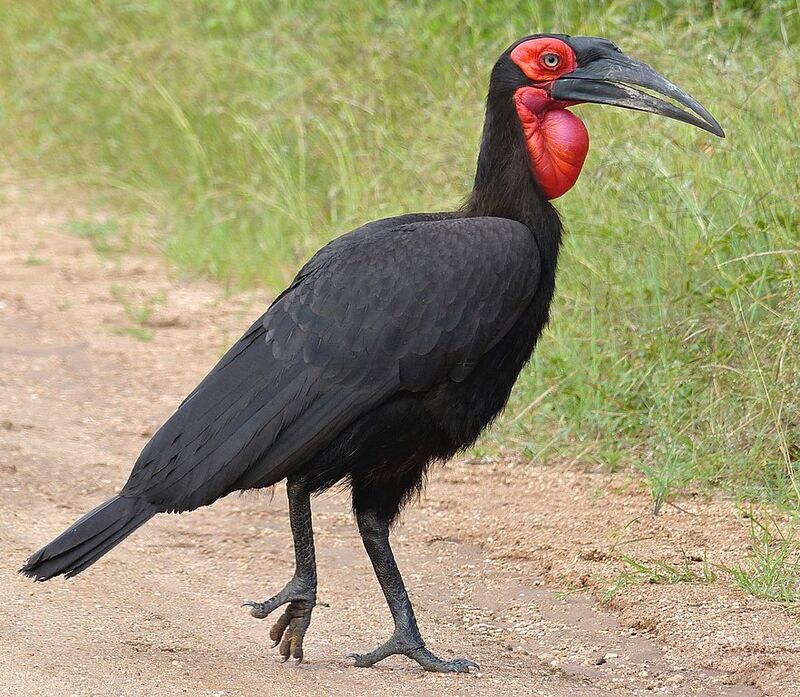
Southern Ground Hornbill - Photo Credit: Wikimedia Commons
Appearance
The Southern Ground Hornbill (Bucorvus leadbeateri) is a member of the hornbill family and is known for its distinctive appearance and behaviour. With a height of over a metre and a weight of up to 5 kilograms, this bird is hard to miss. Its large, black body is complemented by a bright red patch of skin on its face and throat, making it a truly majestic sight.
Juveniles have a greyish-brown plumage and lack the bright red facial skin. The birds also have distinctive eyelashes which protect their eyes from dust and debris while foraging on the ground.
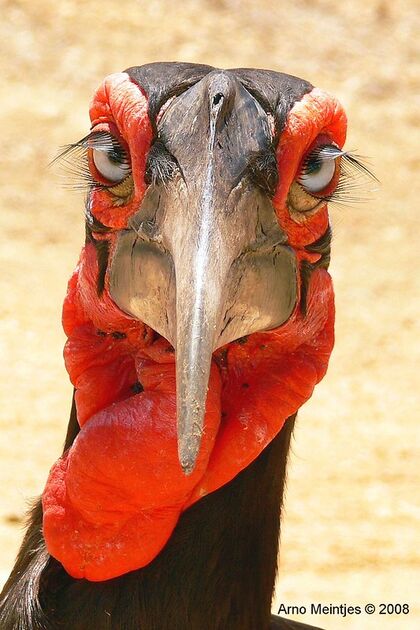
Southern Ground Hornbill Close-up - Photo Credit: Arno Meintjes
Behaviour
The Southern Ground Hornbill is a highly social bird that is often seen in family groups. These birds live in groups consisting of several individuals, and engage in a variety of activities together, including hunting, foraging, and caring for young. One of the most interesting things about these groups is that they often display coordinated behaviour, with multiple birds cooperating to achieve a shared goal.
The Southern Ground Hornbill are known for their deep booming calls that can be heard from a distance, which are used to communicate with other members of the group. These calls are often accompanied by displays, such as head-bobbing and wing-flapping. They are also known to engage in play, using sticks and other objects to amuse themselves.
One of the most interesting behaviours of the Southern Ground Hornbill is its unusual nesting habits. Unlike most birds, this species nests in natural cavities in trees, but also spends many years making their own homes in tree hollows or cliff crevices. Once they've found or created their nest, the birds remain fiercely loyal to their chosen spot and often return to it year after year.
Where to Find
Southern Ground Hornbills are primarily found in the savannas and grasslands of South Africa, especially in areas with scattered trees or thickets. They can be spotted in national parks such as Kruger National Park, Kgalagadi Transfrontier Park, and Pilanesberg Game Reserve, as well as in private game reserves such as Sabi Sands and Timbavati. If you're looking to spot Southern Ground Hornbills in the wild, it's best to plan your visit during the dry season (May to September) when vegetation is sparse and animals tend to congregate around water sources.
It's also worth noting that Southern Ground Hornbills are a vulnerable species and their populations have been declining, so it's important to make sure that you are visiting a responsible and ethical wildlife reserve or park.
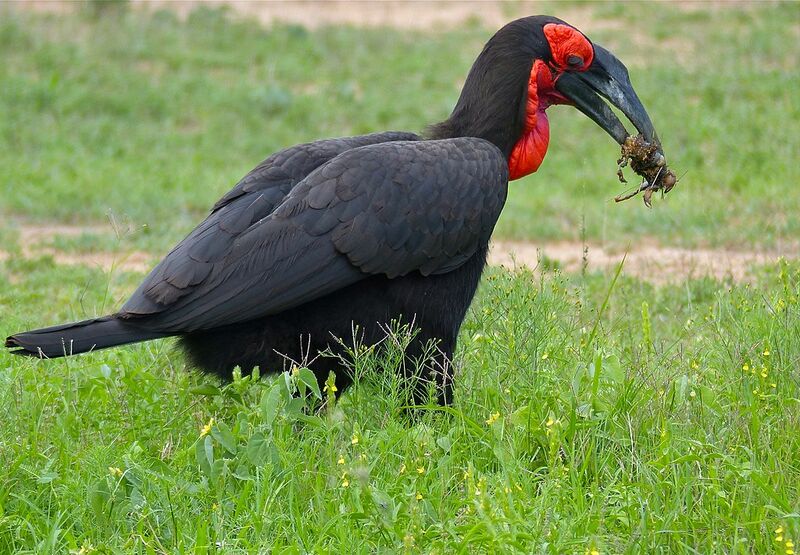
Southern Ground Hornbill eating a scorpion - Photo Credit: Wikimedia Commons
Conservation Status
Unfortunately, the Southern Ground Hornbill is listed as vulnerable by the International Union for Conservation of Nature (IUCN). Habitat loss, hunting, and the capture of live birds for traditional medicine have all contributed to declining populations. However, there are many conservation organizations and local communities working hard to protect this iconic bird, including the Mabula Ground Hornbill Project in South Africa, which focuses on habitat restoration and education.
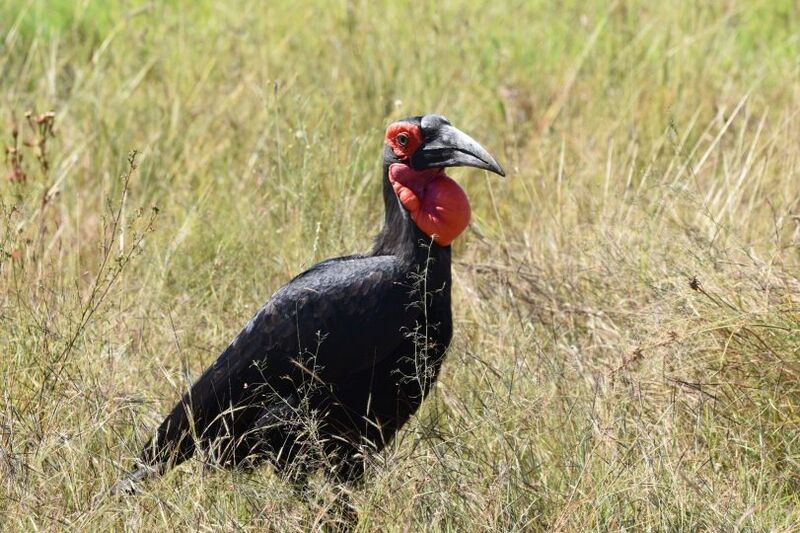
Southern Ground Hornbill in Kruger Park
Cultural Significance
The Southern Ground Hornbill has a rich cultural significance in many African communities. They are often considered to be symbols of power, strength, and good fortune. In some cultures, they are believed to be messengers between the living and the dead, and their calls are said to be the voices of the ancestors. The birds are also used in traditional medicine, with their feathers and body parts believed to have healing properties.
Ground hornbills are sometimes referred to as "Thunder-birds" due to the deep booming sound that they produce. This sound can be heard over long distances and is often likened to the sound of distant thunder - which has caused indigenous tribes of South Africa to believe they are harbingers for rain. Ground hornbills use this call to communicate with one another, especially during territorial displays or when searching for a mate. Their distinctive call has become a symbol of the African savanna and is often featured in movies, documentaries, and other media as an iconic sound of the African wilderness.
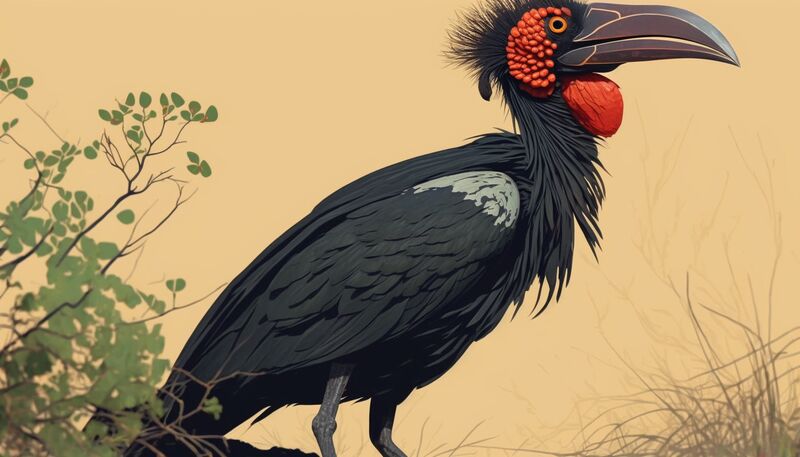
Southern Ground Hornbill Cartoon
Conclusion
the Southern Ground Hornbill is truly one of the most remarkable and unique birds that South Africa has to offer. With its striking appearance, fascinating behaviors, and important cultural significance, it's no wonder that this bird has captured the hearts of many. If you're a bird enthusiast or simply someone who appreciates the wonders of nature, then a trip to South Africa to see the Southern Ground Hornbill in its natural habitat is an experience that you simply cannot miss. With its impressive size and commanding presence, the Thunder-bird is sure to leave a lasting impression on anyone lucky enough to encounter it.
So what are you waiting for? Pack your bags and head to South Africa to witness the wonder of the Southern Ground Hornbill for yourself!
